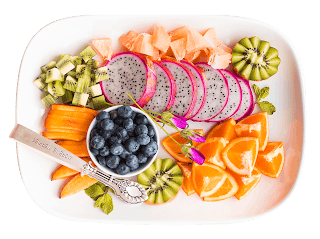Better, But Is it Good for You?
The FDA (Food and Drug Administration) has decreed that all
new products that are required to carry the nutritional labels must adhere to
new standards and revisions. Just a
reminder, foods that are not processed, such as raw fruits and vegetables, need
not carry a nutritional label.
The question remains: what does this newest revision mean for
you, the nutritionally conscious consumer?
Unless you read it, absolutely nothing.
That is why you should pay close attention to it. Secondly, you need to comprehend the
information, or at least to better understand it than before. Become an educated and informed purveyor of
foods. To help you achieve that noble goal. I have included several of the categorized
items that you should be aware of – some are new, some are old.
·
Calories
The
most prominent part of the label (and to make sure we read it, it appears in
large and bold print) is the number of calories per serving. Be aware that
calories are not the same thing as nutritional value. For example, salmon may be high on the
calorie index but is an ideal source of omega-3 and proteins; whereas several
broths are low in calories but poor nutritionally, as they may be rich in sodium.
The
first item on the label you should read in is the number of servings per
container and the serving size that number is based on. Second, compare different food labels, but
only to a comparable item. For example,
when checking a bread loaf don’t compare it to the labels found on crackers. Remember the rule: “Apples to apples…”
·
Percent
Value
Perhaps the most critical part of the label, it appears on
the right-hand side of all panels, as “% Daily Value.” You need to aware that this figure is
calculated based on a 2,000 calorie diet.
First, you may require more or less depending on your age,
body type, activity level, and gender. Check
with your health practitioners what your calorie allowance is, and then make
the necessary adjustments. You don’t
have to be a math major to make these computations, but a calculator – an app
on every smartphone- will help.
Secondly, be aware that not all calories are the same. For example, you should aim lower than 100% on
items such as trans-fat, or sodium and added sugars. But this caveat does not apply to such items
fiber, or minerals and vitamins.
·
Changes
The listing of servings is now based on what the average
American eats or drinks, and not what they are supposed to eat or drink. That is to say that a 20-ounce bottle of soda
is now listed as one serving, as that is how it is consumed, though it is
recommended that you do not drink that amount in one sitting. But we all do.
Some of the daily values have been changed. For example, the level of sodium has been reduced,
while the prescribed intake of dietary fiber has increased. Also, added sugars (as opposed to those found
naturally in fruits or dairy products) are now required to appear as a
subcategory of “Total Sugars.”
Have any thoughts on the issue? Share them with us at www.MatureAging.com, and we may post them
(only after getting your permission) in a future edition.
Till next time,
Josh




Comments
Post a Comment